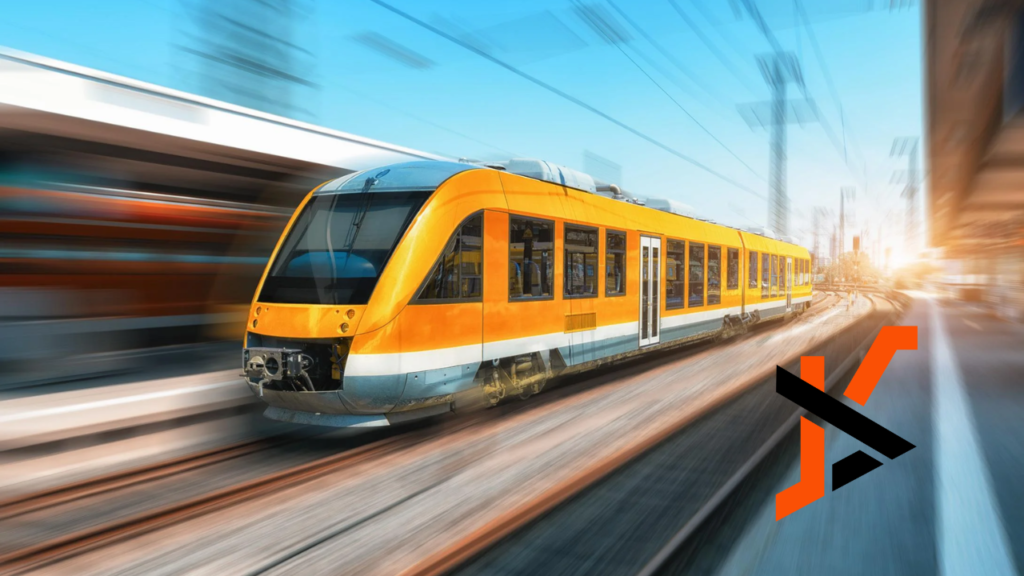Power electronic devices efficiently convert and control electrical power, making them a key technology garnering widespread attention for addressing environmental and energy issues. ModCap is a series of power electronic capacitors developed by TDK, designed for railway and renewable energy systems, enabling unprecedented, innovative solutions.
Technical Challenges in Enhancing Railway Environmental Performance
With growing concern for environmental issues, the shift from trucks to railways and maritime transport for large-scale cargo transportation, known as ‘modal shift,’ has become a focus. Railways, mainly, boast the lowest CO₂ emissions per unit of transport, making them the most environmentally friendly mode of transportation. As emerging nations experience economic growth, the demand for transportation increases, raising expectations for railways.
Comparison of CO₂ emissions per unit of transport for domestic passenger and freight transportation in Japan (efficiency indicator).
In this era of environmental consciousness, there is an expectation for rail vehicles to conserve more energy than ever before. The key to achieving this goal lies in developing electronic technology capable of utilizing power semiconductors to control and convert electrical power. During electrical usage, a portion of energy inevitably converts to heat, referred to as power loss. Therefore, minimizing power loss contributes to increased energy efficiency. Power electronic devices in rail vehicles refer to inverters and other equipment that control motors. Power semiconductors in inverters convert direct current (DC) to alternating current (AC), maintaining the rotation of motors and helping reduce power loss. Capacitors in inverters support the power conversion process by smoothing the DC, and converting it into AC(sources from medcom.com.pl).
The process begins by converting input AC (at a fixed frequency) to DC. Capacitors regulate the voltage to a constant level, and then an inverter converts it back to AC. Power semiconductors within the inverter circuit accomplish the conversion from DC to AC.
Despite the availability of various power semiconductors in the market, Insulated Gate Bipolar Transistor (IGBT) remains the mainstream device for power control. Due to its high-frequency switching capability, IGBT minimizes power loss to the maximum extent and is resistant to high voltage, making it suitable for use in high-current environments. However, from the perspective of the overall development of power electronic devices, although the performance of IGBT and other power semiconductors has improved, upgrading the performance of capacitors used in conjunction with them remains a critical issue.
Revolutionary Power Electronic Capacitor Solutions Breaking Traditional Conventions
Capacitors used in power electronic devices, in particular, need to be compact and lightweight to save space on rail vehicles while being sufficiently reliable and durable to withstand vibrations and harsh temperature environments. Given the nature of large infrastructure systems, capacitors for rail vehicles are generally designed and manufactured according to customer specifications. However, custom products require longer development times, leading to higher costs.
ModCap, developed by TDK, is a series of power electronic capacitors designed to complement IGBT. It breaks industry norms by successfully achieving standardization and modularization. The product stands out for three main reasons.
Firstly, it achieves dual reductions in size and weight by using the latest and most advanced capacitor design rules and optimizing the mechanical coupling between ModCap and semiconductors. ModCap employs a rectangular plastic housing, replacing traditional custom MKK solutions, minimizing volume, reducing weight, and increasing energy density. This helps shrink the overall size of railway power systems(quotes from medcom).
Secondly, it possesses outstanding reliability and durability, capable of withstanding temperatures up to 90°C (the hottest point of internal operation), compared to the previous limit of 85°C. It also meets the highest standards for railway fire and smoke prevention.
Thirdly, it pioneers standardization and modularization in the industry. Personalized requirements that previously required custom designs can now be met through a standardized product line with extensive specifications. Time to market is significantly shortened, while costs are substantially reduced.

